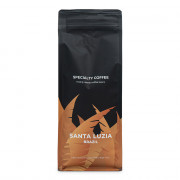With each new cup of coffee, you experience more than just a fleeting moment of pleasure: not only do you get to enjoy your favourite beverage, but you can also savour some of the stories told by the hands of those who helped your coffee grow and reach you. It has gone through thousands of different hands. While coffee beans can’t speak to us directly, they communicate with the help of extraordinary flavours and aromas, inspiring millions of people across the globe to start their day off right or even go and create engrossing stories of their own.
One of such storytellers and sworn fans of coffee is the famous filmmaker David Lynch. He called coffee his source of inspiration in numerous interviews over the years, saying:
‘Coffee is part of the art life. I don't know quite how it works, but it makes you feel really good and it serves the creative process.’
Imagine this then: you step into the meeting room one day and find a cup of hot coffee already standing on the table. In the background, the soundtrack of Twin Peaks — Lynch’s dark, hypnotising masterpiece — is playing. All the while, there’s a single question spinning round and round in your brain. The question, of course, is this: what’s the origin of this coffee?
Stories of Single-Origin Coffee
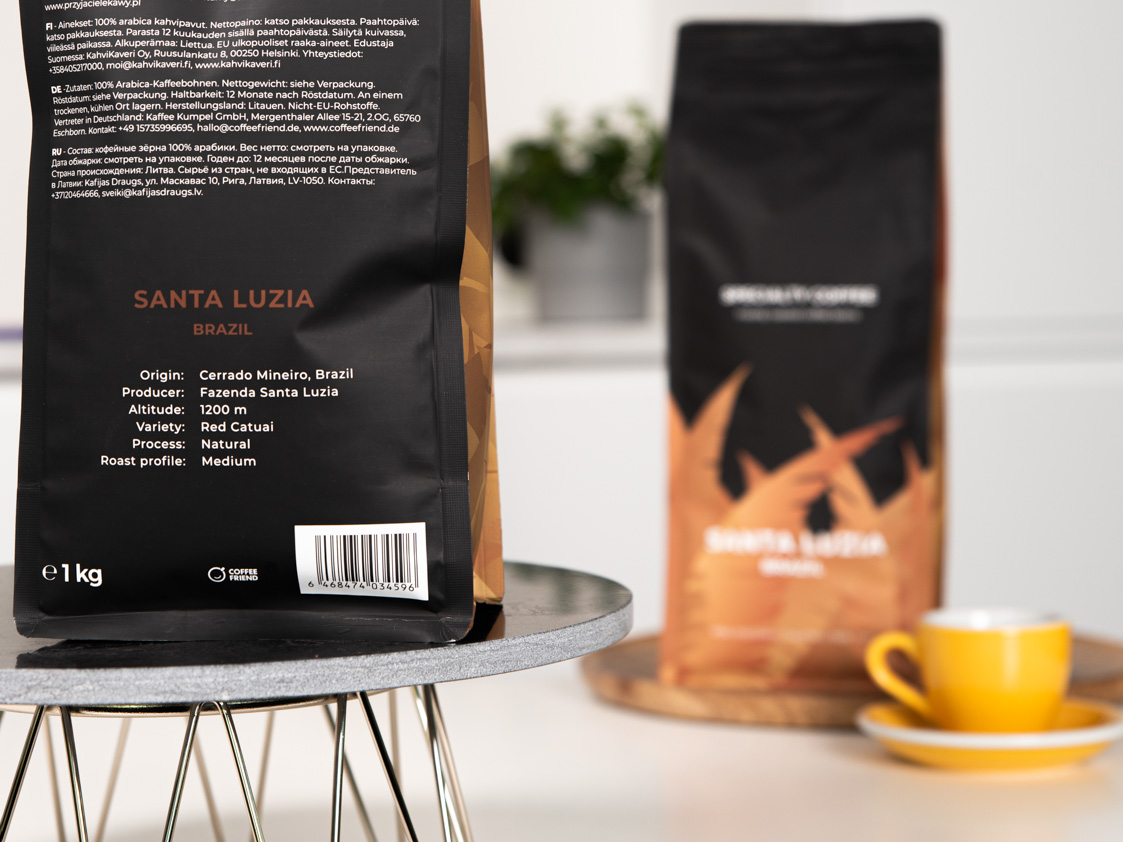
Just a few decades ago, the above question would have made no sense. Traditionally, in keeping with the customs pertaining to the classic Italian espresso, roasters used to blend beans originating from different countries and belonging to different varieties. The exact origin of the beans making up these blends was kept secret by the manufacturers. However, as more and more people started appreciating specialty coffees and high-quality beans, traceability and origin slowly turned into the central points of discussion.
Little by little, coffee started being viewed as much more than just a dark, bitter beverage. Behind each cup of coffee, there now lingered a certain background: the flavour and value of the beans became inseparable from their origin story. This is how the term “single-origin” came to be. Found on the packaging of a certain coffee, this phrase indicates outstanding quality and entices curious coffee drinkers to explore the possibilities afforded by such beans—after all, if they’re single-origin, this means that the buyer can trace them to a certain farm, certain weather conditions and a certain coffee plant species, hence experiencing truly unique flavours that are characteristic of those beans only.
Technically, by the way, any coffee beans that have been grown within the bounds of the same country and have been consequently mixed together in a blend could be referred to as single-origin. Tradition states that this term should be reserved for talking about the same coffee estate and not the same country though. If a roaster was to mix a bunch of beans originating from Brazilian coffee estates, for example, these beans couldn’t be rightfully called single-origin.
From Berry to Bean

Imagine a movie following the journey of coffee, from a humble berry all the way to the glorious bean. How would such a movie start, you wonder? Well, it should all begin with a seed of a coffee tree planted somewhere around the Equator, where the weather is warm and humid, the average air temperature fluctuates around 20 °C and the soil is rich with organic matter. The action would probably take place at the start of the rainy season: this would ensure that the seed is provided with enough moisture.

As the action unfolds, the plant would slowly mature and face numerous natural challenges, like heavy rains, droughts, pests and frost. The eye of the movie camera would then glide gracefully over the coffee plantation, adorned all over with gorgeous white blossoms, and then show us the very moment when these blossoms start turning into coffee cherries. By the way, did you know that coffee can actually bloom twice? It is the plant that blooms first—and then, once hot water is poured over ground coffee beans, they proceed to bloom too! Coffee blooming is the act of dampening ground coffee with hot water to provoke the release of carbon dioxide (CO2). Visually, this sort of blooming takes the form of a foaming, crust-like layer covering the top of your coffee. As they taste various coffees, experts of this drink even compete to see who will “break” this crust first: it’s believed that as soon as that’s done, the most authentic, delightful aroma can be experienced.

Let’s go back to our movie though: in the coffee estate, cherries would go on maturing bit by bit, turning from green to yellow, then from yellow to red. It’s said that the brighter the red of the cherry, the more sugar it contains. This affects the taste of the resulting bean too. There’s still a long way to go for the bright cherry to turn into a coffee bean though. On the screen, we’d watch the ripe cherries being carefully picked by hand. They don’t all ripen at the same time, so it takes some hard, honest work to ensure that only those beans that have fully ripened end up being picked. Such painstaking labour is complex and expensive, so only cherries of the highest quality are harvested manually—although this may also be the case if farmers have no other means of picking them. Mechanical tools make this process a whole lot simpler, of course, but they end up picking everything instead of choosing the ripe cherries only. If farmers seek to ensure high quality, they must sort through the beans afterwards anyway.

Once the cherries have been picked, their pulp must be stripped off in order to free the pit, or the future coffee bean. To do that, various processing methods are used, yet two of them are encountered most frequently. The first of these is called “natural process”: it involves drying the cherries out in the sun while turning them over and over. The second processing method is called “washed”. This is because, as cherries are being washed, the ripe ones are picked out and their pulp is removed. The processing stage is particularly important as the chosen method influences the flavour of the resulting coffee.
Long Voyage Across the Sea

Having been carefully sorted and packed, the beans must then endure a long journey from the coffee-growing country to their final destination. This can last weeks or even months. More often than not, they travel by sea, as this is around 4–6 times cheaper than flying the beans over to their destination by plane. A single sea container can hold as many 300 bags of coffee beans, each of them weighing in at about 60–70 kg.
To the people who roast specialty coffee, choosing the means of transport is nothing short of a vital business decision: the quality of the green coffee beans must be preserved and the roasters must have enough time to roast and then pack them. Even more challenges await roasted beans that are being transported somewhere else, as they have to remain fresh until they reach the customers.
Like most food products, coffee beans are affected by various external factors. In other words, changes of light, humidity, oxygen levels and temperature can either boost or reduce their quality. This is why protecting the beans from harmful external factors during their journey from one place to another is absolutely crucial. After all, if coffee doesn’t withstand the voyage from a coffee farm to the roaster or from the roaster to the customer, years and years of arduous labour become absolutely worthless.
If coffee beans are processed in their country of origin, this means they’ve been dried for a long time. As a result, it’s important to maintain their moisture content at around 11–14 percent during transportation. To put it simply, beans must be prevented from absorbing more moisture, which is what they’re naturally inclined to do. It’s claimed that in order to achieve this, the moisture content of the surrounding environment mustn’t exceed 60 percent — otherwise, mould and various pests can develop.
Sudden changes in temperature during transportation can also damage the beans, causing condensation to accumulate inside the bags. This increases their moisture content and results in the beans losing their aroma and flavour. If a relatively low moisture content is maintained, yet the temperature is higher than required, the quality of the coffee beans is bound to suffer anyway. So, in order to ensure consistently high quality, roasters must go through every detail of the approaching journey beforehand: hermetically sealed bags, for example, can work as an efficient solution.
From Pale to Attractively Tan
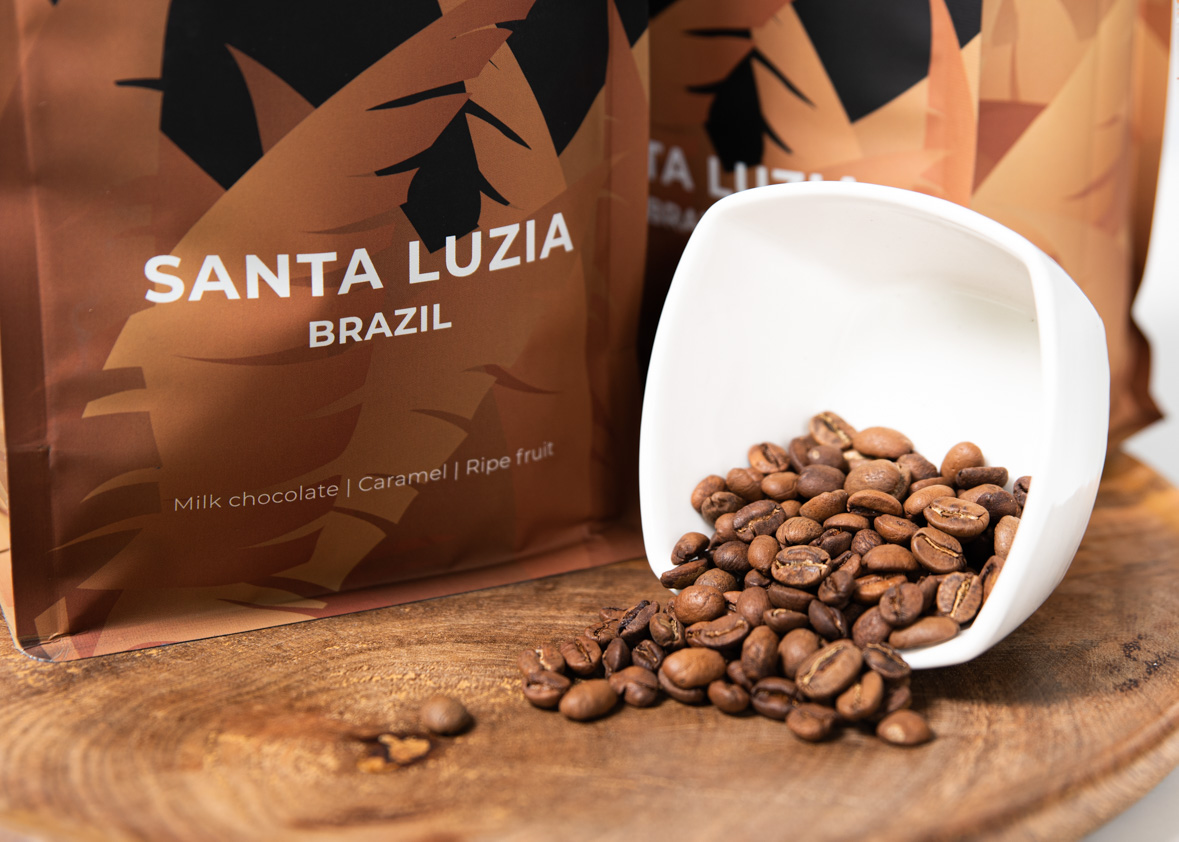
The long, treacherous voyage of coffee beans ultimately culminates in them being roasted. This releases all of the flavours accumulated by them in their country of origin. The roasting process may seem as magical as alchemy at times. It’s roasting that ends up turning an unsightly, pea-like pit of a coffee cherry into an enticingly fragrant, delightfully tasty coffee bean!
Coffee roasters are fully responsible for the flavours unveiled and created during the roasting process. There are three key roast levels: light, medium and dark. Single-origin coffee beans are usually roasted lightly, as this helps preserve the natural flavours accumulated by them while they were still nothing more than humble cherry pits.
Medium roast causes beans to produce more natural oils, so their taste begins morphing and getting stronger. It’s valued by coffee experts because of the balanced flavour it results in. Meanwhile, dark-roasted beans are usually designed for the espresso brewing method: it’s characterised by an extremely short contact between beans and water, so the flavour of the beans must be as intense as possible.
The best results are obtained by those roasters who seek to reveal the balance and potential already present within the beans. With the help of nature and dedicated coffee farmers, these flavours have already been created, so it’s important to avoid ruining them by, for example, opting for a roast that is too dark.
Grinding Softly, Brewing Passionately
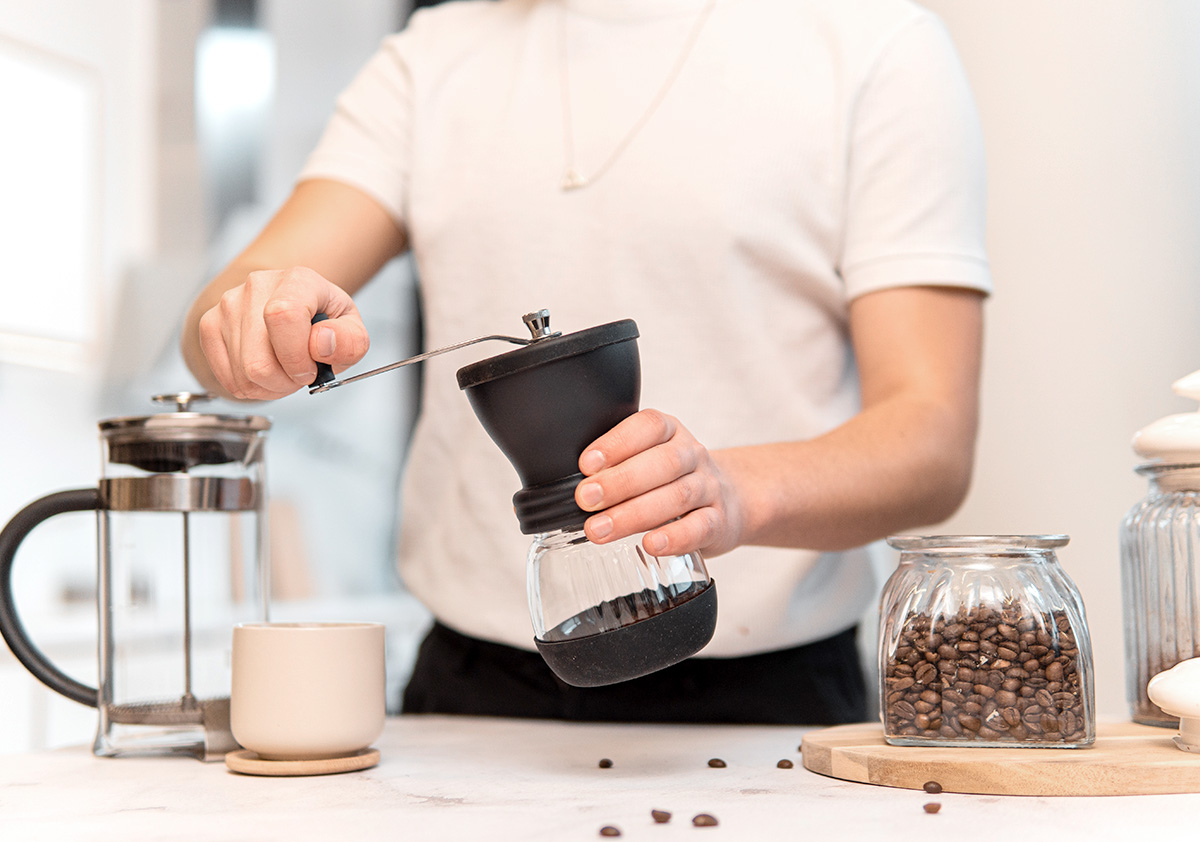
The pinnacle of the coffee journey comes with the beans being ground, the drink being brewed and the final result being savoured. Ideally, each of these steps should come right after the other—again, this will help you preserve the high quality of the beans. In other words, it’s best to buy whole coffee beans and then grind them at home to keep their aroma and flavour intact. The longer the contact between ground beans and oxygen, the easier it is for the drink to become flat. If you want to experience everything coffee has to offer, make sure to only grind the amount of beans that’s needed for the beverages you plan on preparing immediately.
You may be wondering now how you should brew your coffee. Even the pickiest coffee connoisseurs would surely tell you that what’s truly important here is great company — after all, coffee works wonders when it comes to getting the conversation flowing. It goes without saying that choosing high-quality coffee beans is vital too, as they’re the only ones that can provide you with a unique opportunity to discover the extraordinarily varied flavours of the coffee world. ‘But if the brewing method isn’t that important, why are there so many of them?’ you might ask. Well, as single-origin varieties keep growing more and more popular all over the world, coffee enthusiasts are constantly coming up with innovative coffee makers capable of unveiling different nuances of flavour.
Don’t even get us started on all of the numerous brewing methods that are specific to certain cultures and have an historical significance, such as the Turkish coffee pot, the espresso machine and various others! In the end, there’s no right or wrong way to brew coffee. It all comes down to convenience and taste. You should always go for the brewing method you find to be the most convenient and best suited to your individual palate.
Discover the True Value of Coffee
As you can see, the story of coffee origin makes for a beautiful movie. We could make it even more dazzling by taking a walk along the coffee belt girdling the whole globe. What’s most important here though is not dashing from country to country in an effort to see as much as we possibly can, but rather revealing the true value of coffee and creating a firm link between coffee farmers and coffee lovers. Let’s continue this journey, shall we?
The Slow Ticking of Time

If you don’t know where to begin, the Japanese would tell you to begin from where you’re at. When it comes to the origin of coffee, we’d start from something that isn’t a geographical location at all. The reason for this is simple: whether you find yourself in Africa, South America or Asia, the rules for coffee farming and getting the beans ready for their journey remain the exact same.
What we’d like to start from instead is time. With coffee, there’s no need to rush—unless we’re talking about beans that have already been roasted, of course. This applies to coffee farming as much as it does to coffee drinking. If we were to focus our attention on the cup of coffee standing in front of us and then rewind its story right to the very beginning, we’d find ourselves travelling 5–10 years back in time! This is when the tale told by your coffee is likely to have started—and it all begins with the harmonious cooperation between man and nature.
A Unique Masterpiece

Having started from the seed of a coffee tree planted into the earth, the journey of coffee ends with your own two hands holding the coffee cup. How many years does this take, you wonder? Let’s try and count!
A coffee plant can produce its first harvest in as little as 3–4 years, but it takes 7–8 years for the plant to fully mature. The growing and ripening of coffee cherries lasts for another 8–9 months. Afterwards, these cherries have to be picked and processed—that is, the bean must be freed from the pulp. The beans are then dried and sorted through to find the very best ones. This process can take up to a few months more.
Green, unroasted beans must then travel from the farmers to the roasters. They’re usually transported in sea containers. Having received and assessed the beans, coffee roasters experiment with various roast levels, looking for the right one. Once they find it, the coffee is sold to you and brewed at home, or served in a café by a professional barista.
Caring Human Hands
It’s none other than human hands that guide the beans along their journey from a coffee plant to your cup. These hands plant the seed, take care of the growing coffee tree, pick the cherries, wash them, dry them, sort through them, process them and turn them into coffee beans, then roast those beans, pack them, grind them, until finally brewing a delicious cup of coffee. This cup can hence be seen as a unique piece of art resulting from the cooperation of numerous different people, most of whom you’ll never even meet.
If you were to pay a visit to a coffee estate, you’d see how hard and, sadly, low-paid the job of a coffee farmer is. Because of this, many coffee farmers eventually stray away from this occupation and move on to more profitable ventures. Invaluable traditions, passed down from generation to generation, break off and are lost forever...

There are other stories too though—stories of families that deviated from the farming path, yet rediscovered the coffee business decades later anyway. José Maria de Oliveira spent his childhood in his grandfather’s coffee farm nestled cosily in the Brazilian region of Campos Altos. He used to play amongst the cherries and help his grandfather pick them. Unfortunately, when José was seven years old, his family was forced to abandon the farm due to financial difficulties. To survive, they found work in farms owned by other coffee growers.
When José was seventeen, he left the farm for the big city. He worked in the pharmaceutical industry for a few decades, rapidly moving up the career ladder, but José’s memories kept on bringing him back to his childhood in Campos Altos and the extraordinary coffee that used to grow there. In 2004, José purchased some land in the region and started planting coffee trees. Although there were times when he felt like quitting—especially when he was being pressured to sell his coffee beans at an extremely low price—José didn’t give up. What finally helped him achieve success was the realisation that modern coffee farming isn’t at all about harvesting as many beans as possible. The goal here is to produce beans of the highest quality—beans that true coffee lovers are ready to pay extra for.
Reflecting on his career in the city, José now says it taught him two very important lessons: these are the importance of staying organised and the value of clear-cut procedures. Nowadays, his family owns four large coffee estates-fazendas producing beans of a fully traceable origin.
This is where the journey of our very own Brazil Santa Luzia coffee beans has started. The pictures illustrating this post show the astonishing beauty of this remarkable corner of the globe!
The Impact of Terroir

Even though the whole coffee world abides by similar rules and procedures, each cup of coffee is still a unique masterpiece. This is because, as your coffee inches closer and closer towards you, its flavours are affected by the smallest of details at every single stage.
Coffee connoisseurs have borrowed the term terroir from French wine experts. It encompasses all of the numerous environmental conditions surrounding the coffee plant: this includes its species, climate, soil, harvesting method and manner of processing. The term also incorporates human activity. Generally, it can be said that terroir is the very story of a certain plot of land and its future harvest. This means that the taste of your coffee doesn’t really depend on the chosen roast level, the preferred brewing method and the like — all these can really do is unveil the qualities already hidden inside the beans.
The primary flavours of any coffee bean result from the environment it’s been grown in — which is why traceability is so crucial. Nowadays, manufacturers don’t stop at simply letting you know the coffee’s country of origin. You can even find out the region and the estate your coffee beans come from! More and more reliable coffee businesses are now committing to supplying their customers with high-quality coffee beans whose origin is fully traceable.
Challenges of Temperature
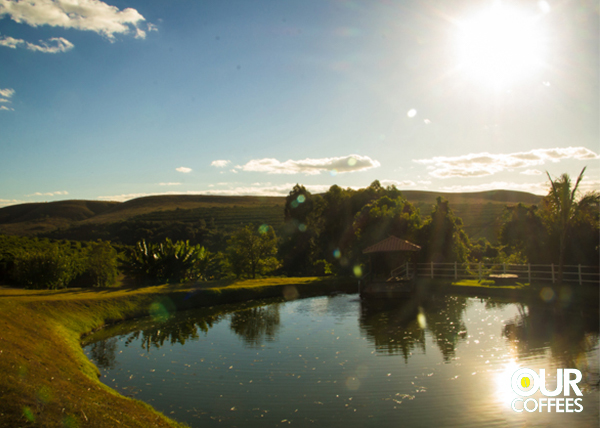
The impact of temperature on the taste of your coffee appears in various guises over the course of its journey from soil to cup. At least one of these guises will sound familiar to pretty much every coffee lover out there. Have you ever heard others saying that coffee should be brewed, not burned? In other words, you shouldn’t pour boiling water over your coffee. You can take advantage of a simple tip: once the water has boiled, set it aside for 1–2 minutes, allowing the temperature to drop to around 94 °C.
Coffee faces its first baptism by fire way before it’s exposed to water though. In the hands of roasters, it’s as if green beans suddenly come alive: heat causes them to swell up and morph from hard, green cherry pits into the brown beans that we all know and love. During this process, it’s crucial to avoid burning them. As fans of Star Wars would say, ‘If you’re looking for great flavour, stay away from the dark side!’ Beans with a roast that is too dark—or beans that have been, quite simply, charred—constitute one of the greatest crimes of the coffee world. On the other hand, a very dark roast is often used to mask the defects found in low-quality beans.
Man controls the roasting process—however, up to that point, the surrounding temperatures are all up to nature. Changes in temperature affect the conditions that the growing coffee plant and its cherries are subjected to. They can also play a critical role in the drying of beans that are processed naturally. Caused by rapid climate change, rising temperatures result in rampant plant diseases and force coffee farmers to plant their trees higher and higher above the ground in an effort to ensure favourable weather conditions. It’s an established fact though that as the climate keeps on changing, our favourite coffee flavours are likely to be transformed as well, while growing coffee beans of the highest quality is bound to become more and more of a challenge
Clean Coffee

What would you do if, while enjoying a cup of coffee, you’d be asked by somebody whether your coffee tastes clean? What would you say? You might start wondering first of all, ‘But can coffee ever taste unclean?’ The answer is simple: yes, it can! As beans mature, various issues can result in undesirable flavours. Most experts describe unclean coffee as characterised by a pungent taste of wood or grass, while the flavour of coffee that’s been properly processed is usually referred to as “clean”.
When talk turns to bean defects, which result in unclean flavours, the first probable culprit is the chosen processing method. For example, some people claim that compared to the washed process, the natural one is more likely to produce various flaws. The natural process involves leaving the whole cherry—pulp and pit included—out to dry and only separating the pit from the pulp at the end of this process. On the contrary, if the washed method is chosen, the pit and the pulp are separated pretty quickly. It takes a long time for the beans to dry out. Moreover, while they do that, coffee beans must be turned over and moved around constantly to ensure that they dry out consistently, mould doesn’t develop and fermentation is kept under control. All of these aspects have a direct impact on the flavour of your coffee.
On the other hand, even if beans have been flawlessly processed, they’re still not completely safe from tasting unclean. For example, a high-quality coffee plant growing at an insufficient altitude and surrounded by weather conditions that aren’t exactly favourable won’t result in a cup of clean coffee, no matter how carefully its cherries have been picked and processed. Aware of the effects of climate change, farmers are now on a search for coffee tree species that would be capable of producing high-quality beans even at relatively low altitudes.
In Place of a Conclusion

Over the course of hundreds of years, coffee has firmly entrenched itself as an essential component of our culture and social lives. Each of us has—or is still searching for—their favourite coffee variety. Next time you savour a cup of delicious coffee, you may want to stop for a second and think about the challenges it had to undergo in order to provide you with this moment of pleasure. The coffee world is waiting for every one of us to explore it. Now all we have to do is listen to its stories.
Location – Twin Peaks. Special Agent Dale Cooper:
‘Harry, I am going to let you in on a little secret. Every day, once a day, give yourself a present. Don’t plan it, don’t wait for it, just let it happen. It could be a new shirt at the men’s store, a catnap in your office chair or two cups of good hot black coffee.’


